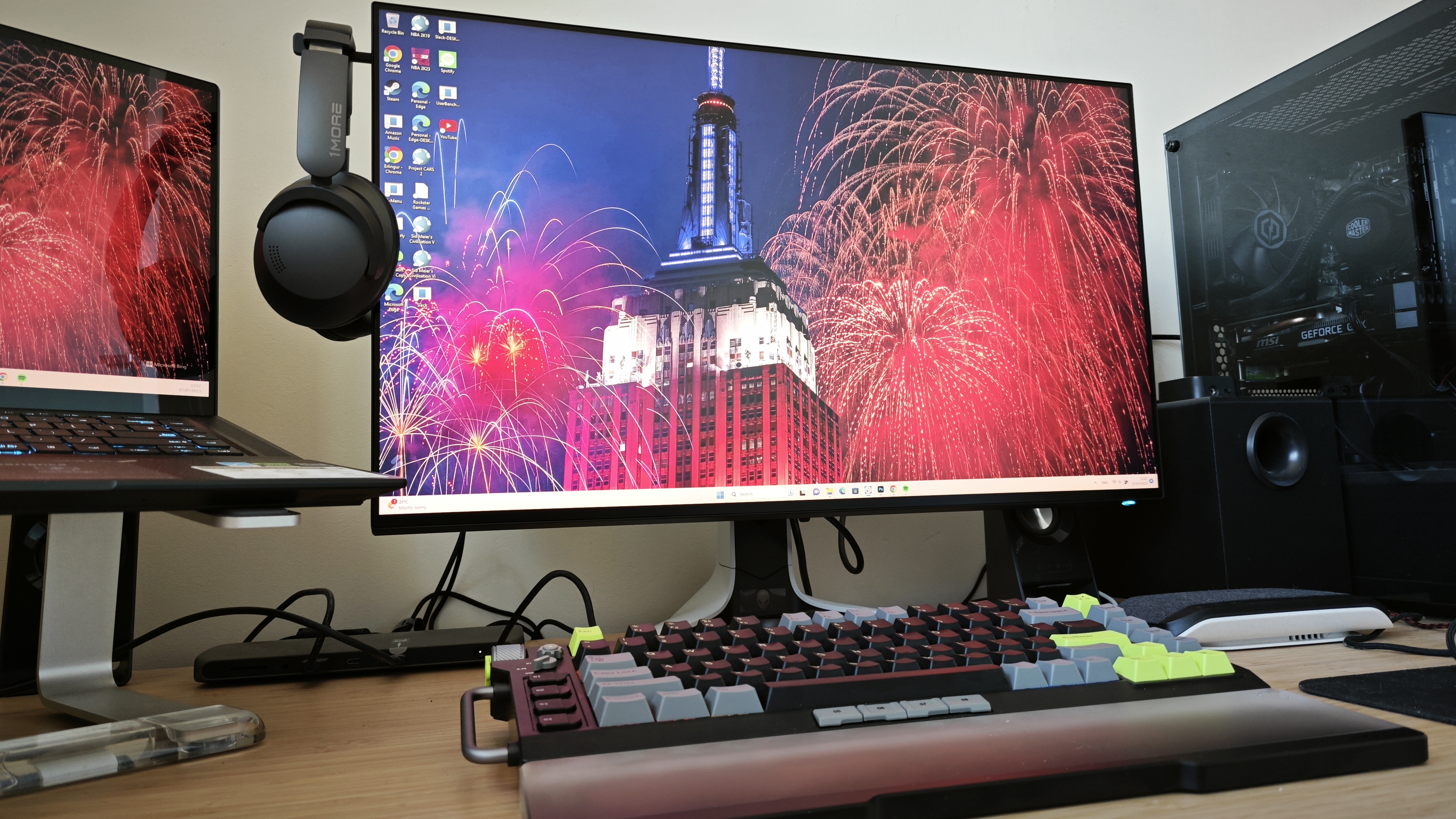
The Alienware AW2723DF comes from one of the most respected monitor makers out there, Dell. While the parent company's products are known for solid, trustworthy, no-nonsense products in decidedly understated packaging, Alienware is almost the polar opposite; every product I've ever used with that now-iconic alien skull logo emblazoned on it is almost gleefully maximalist, packed with exciting features, always ambitious specs-wise, and always frustrating or perplexing in at least one way, if not several.
So with that experience in mind, I got the Alienware AW2723DF gaming monitor in for testing and reviewing, to see whether it belongs among the best Dell monitors or the best gaming monitors available right now. And over the last few weeks of work and play with the AW2723DF, I've found this Alienware screen... well, gleefully maximalist, packed with exciting features, ambitious specs-wise and frustrating in at least one way.
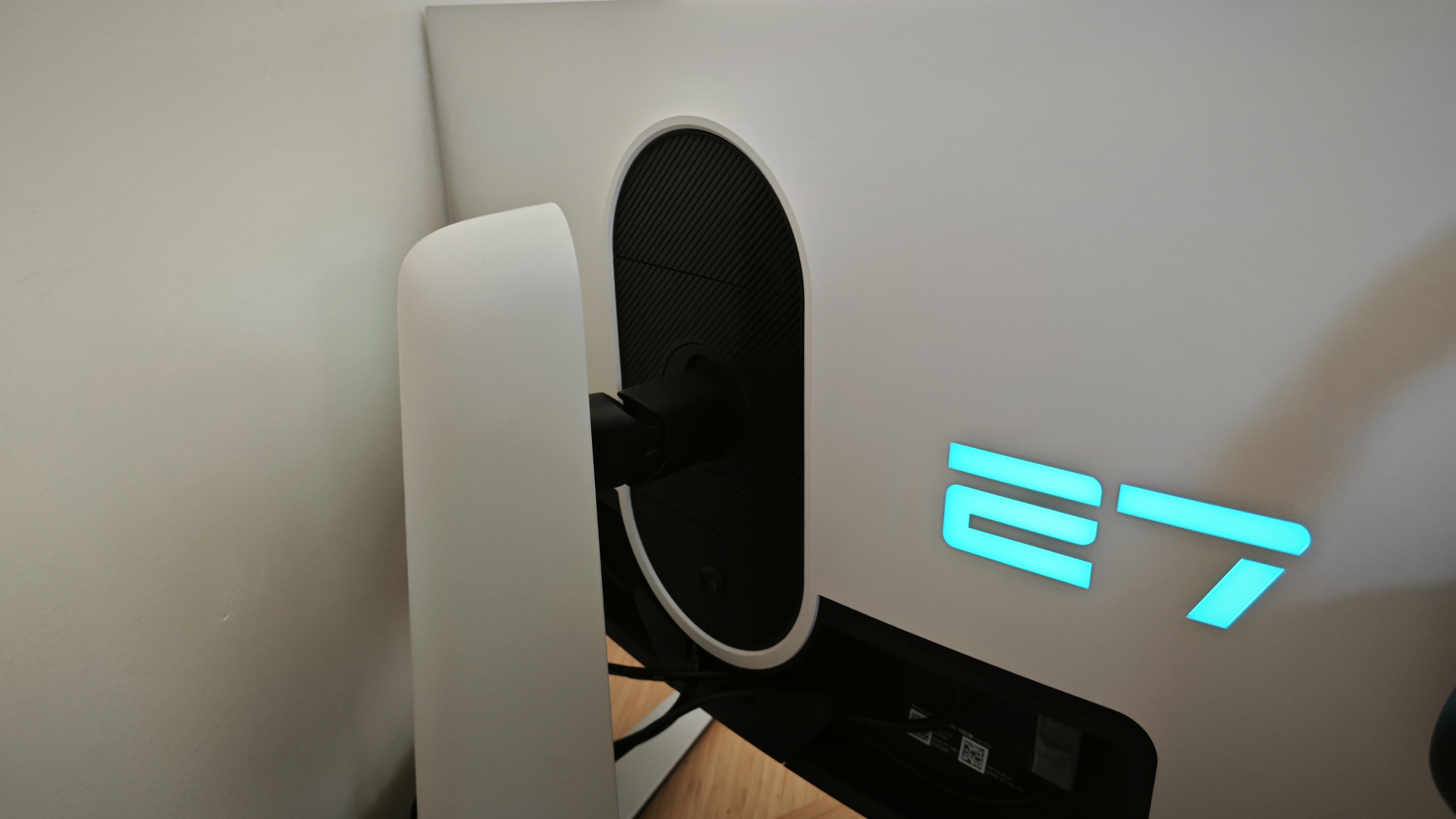
Alienware AW2723DF review: Key specs
Design and build
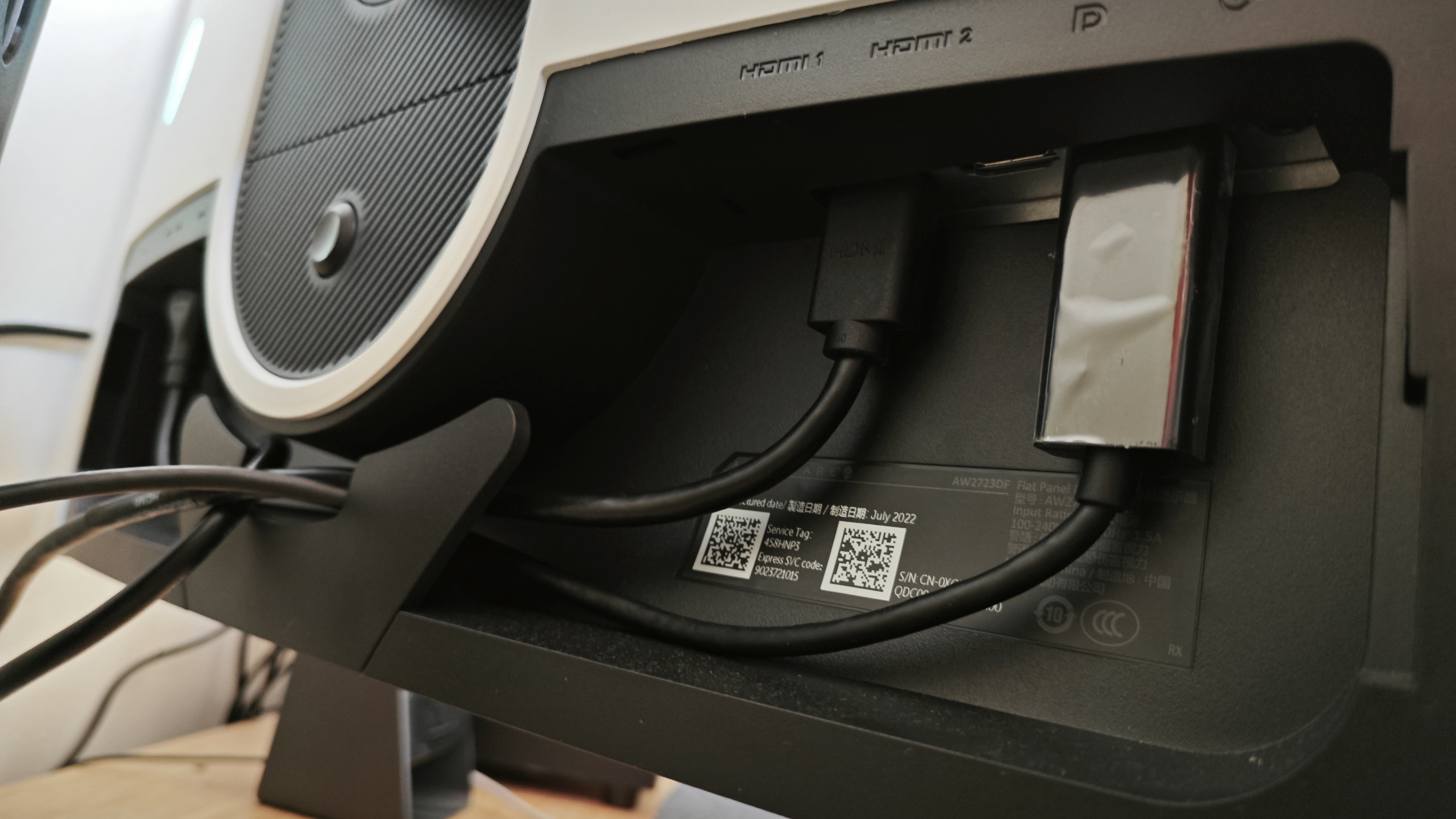
Alienware has never done understated, and this monitor certainly keeps that streak going. Arriving in a box the same size as many other monitor makers send their 32-inchers in, the pure heft of the AW2723DF is immediately felt.
The back and stand are mostly white, with the Alienware logo adorning the bottom of the stand, peering at the user from underneath the screen, and the back of the screen itself, along with a large stylised '27', just in case you ever forget how big this thing is. And on the back, the logos light up brightly, casting a glow onto the wall when you play/work late into the night.
The white-covered back is curved and the ports are notched into the extruding curve, with a cable-tidy slot to thread all cables through the centre. I do recommend that you plug everything into the monitor before setting it up in its desired place on your desk, though, because adjustability is limited, and the heaviness of the unit means shifting it around is trickier and more cumbersome than most monitors of this size I've used recently.
It's also quite tricky to see where everything plugs in, due to how tucked away the ports are, and only the nimblest of fingers will be able to get everything set up without some extensive fumbling.
On the front, things are a lot simpler. A large, anti-glare-coated Fast IPS panel with impressively thin bezels on all sides greets you, and linking one connection to a laptop and another to my tower PC, it automatically switched to the active input at any time, and in case both are powered up at the same time, the OSD menu is controlled by a button tucked under the centre of the screen, and I quickly got used to the 'blind' navigating of the menu, to manually select inputs, preset modes and to adjust brightness, contrast and the like.
The stand, with its two protruding V-shaped feet, is as impressively/dauntingly bulky and heavy as the screen, but hey, at least it keeps everything firmly stable once set up. And there's soft-touch cushioning on the desk-contact surfaces, to prevent any scraping or marking.
Features
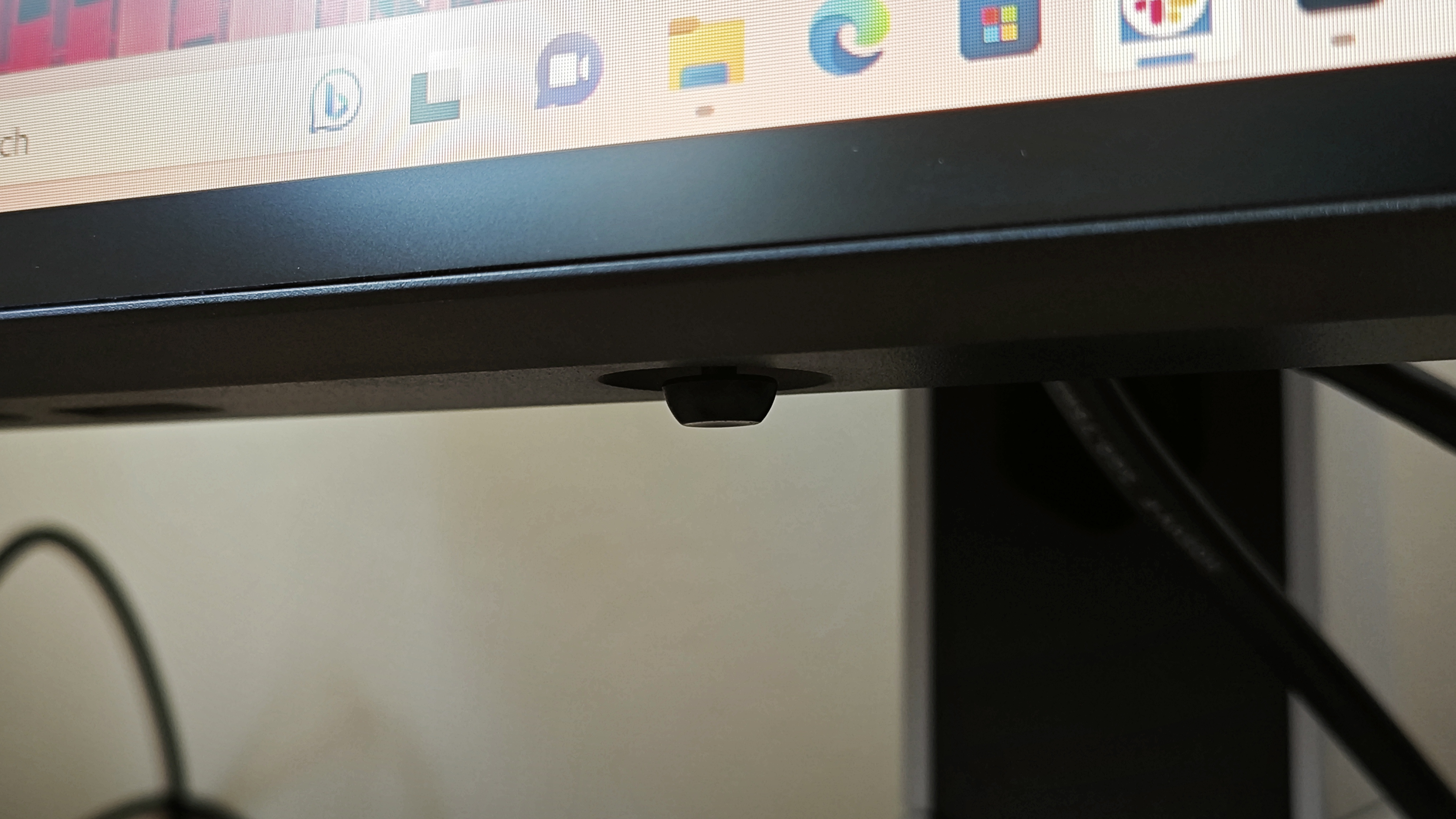
As a gaming monitor, 'fast and bright' is the order of the day here. With a 240Hz maximum refresh rate, QHD (2560x1440) resolution and DisplayHDR with 600 nits of brightness, Alienware duly ticks all the boxes for ambitious, discerning gamers, and with several preset modes for different types of gaming, I quickly found myself impressed with the huge customisation variety on offer.
There's also a DisplayHDR mode that you can turn on and off, for a maximum 600 nits of brightness.
More importantly for Creative Bloq readers, there are also DCI-P3 and SRGB modes for creative, which make the most of the colour coverage on the monitor.
Then, on the hard-to-reach back, there are several USB ports to turn the monitor into a makeshift USB hub for peripherals and accessories.
There's no webcam here, but there are integrated speakers, although like most monitor speakers, the quality is nothing to write home about, perhaps because Dell is acutely aware that most people who care about audio will already have a speaker/soundbar setup ready to go, or high-quality headphones that will outdo anything you can build into a monitor.
Performance
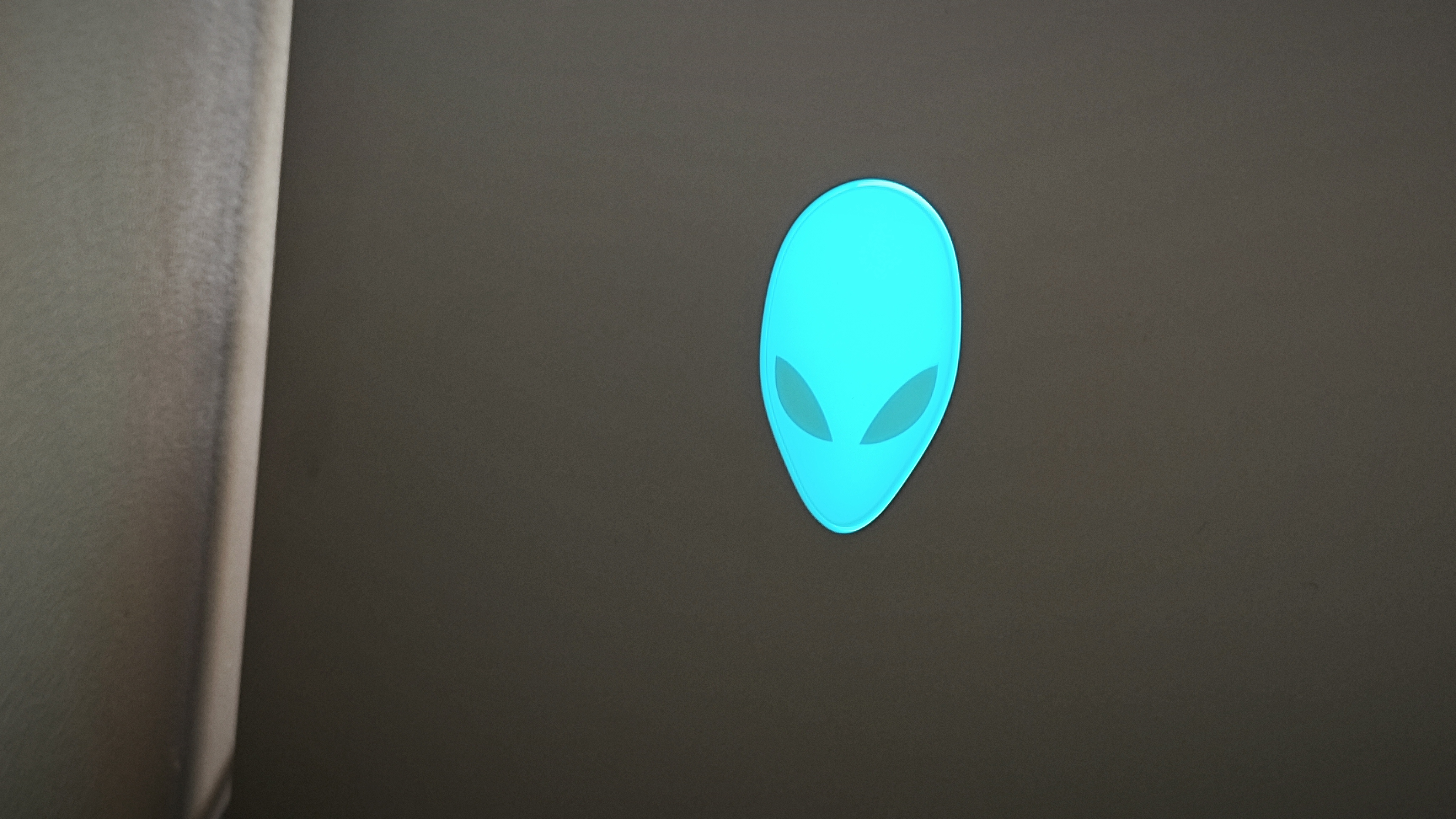
I found the Alienware AW2723DF hugely impressive in use, for the most part. The HDR mode is incredibly bright, but does so without distorting the colour space too grievously, like sometimes happens on some poorly calibrated screens. The sRGB preset mode was pretty much 'plug-and-play' (or 'select-and-play') for any photo-editing and Photoshop work I needed to do, and connectivity was effortless.
Gaming-wise, I used 144Hz and 240Hz modes extensively when playing sports, racing and fantasy games, including NBA 2K23, Forza Horizon and The Witcher 3, among others. The QHD was also a great boon for keeping a great overview of my budding empire in my squillionth run through Civilization VI, so most gaming types were handled with ease by the screen.
However, I did encounter one recurring frustration when hooking my HDMI up to a (very capable) dock for linking to a laptop, where it would black out for a second or two. After much confusion and befuddlement, the cause was eventually found, and it was almost embarrassingly simple; with the cable tidy integrated into the centre of the notched backside, I had dutifully run all my cables through there to keep things nice and neat. However, with how tightly fitted it is (instead of running through a hoop on the stand like on many competing monitors), it tugged ever so slightly on the cable, partially dislodging it from the HDMI port on the monitor. A daily check-up on the connection integrity stopped this from happening, but did feel slightly frustrating whenever a temporary blackout happened.
All in all, though, I found the AW2723DF hugely impressive in use, and while you can get HDR and QHD resolution with a 240Hz refresh rate on cheaper models (this one retails for over £500/$600 before discounts), the combination of presentation, build quality and performance more than justifies the price here.
Price
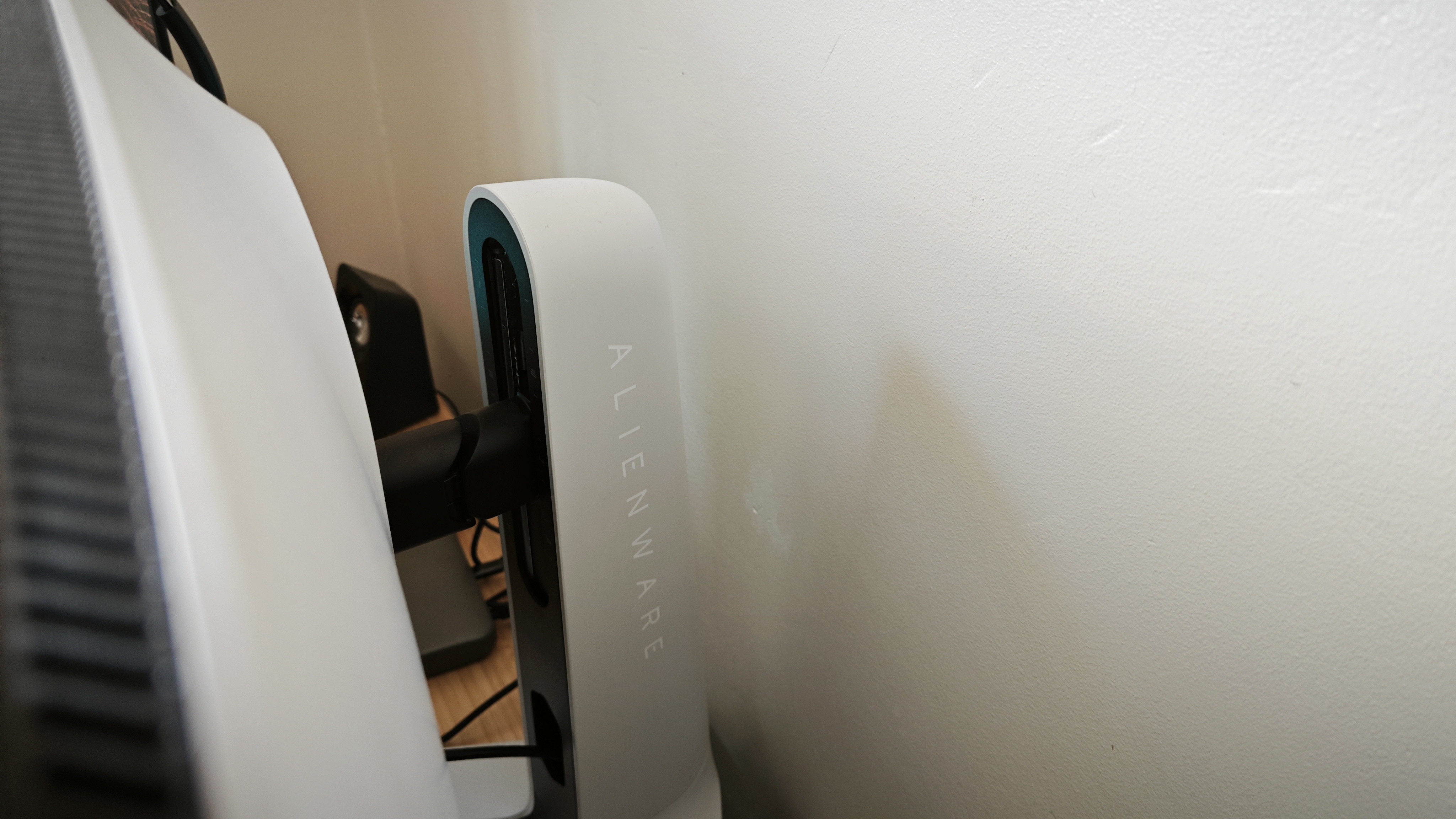
The RRP for the Alienware AW2723DF is £539/$649.99, but Dell offers regular discounts on its website, and shopping around could also yield a good deal on it, especially as it's no longer the absolute latest gaming monitor from Alienware, so keep an eye on our price widget for price updates. The price fairly reflects the specs of the monitor, and while you can get similar resolution and refresh rate for less, both the brand trust, premium packaging and convenience features help justify the slightly higher sticker price here.
Should I buy the Alienware AW2723DF?
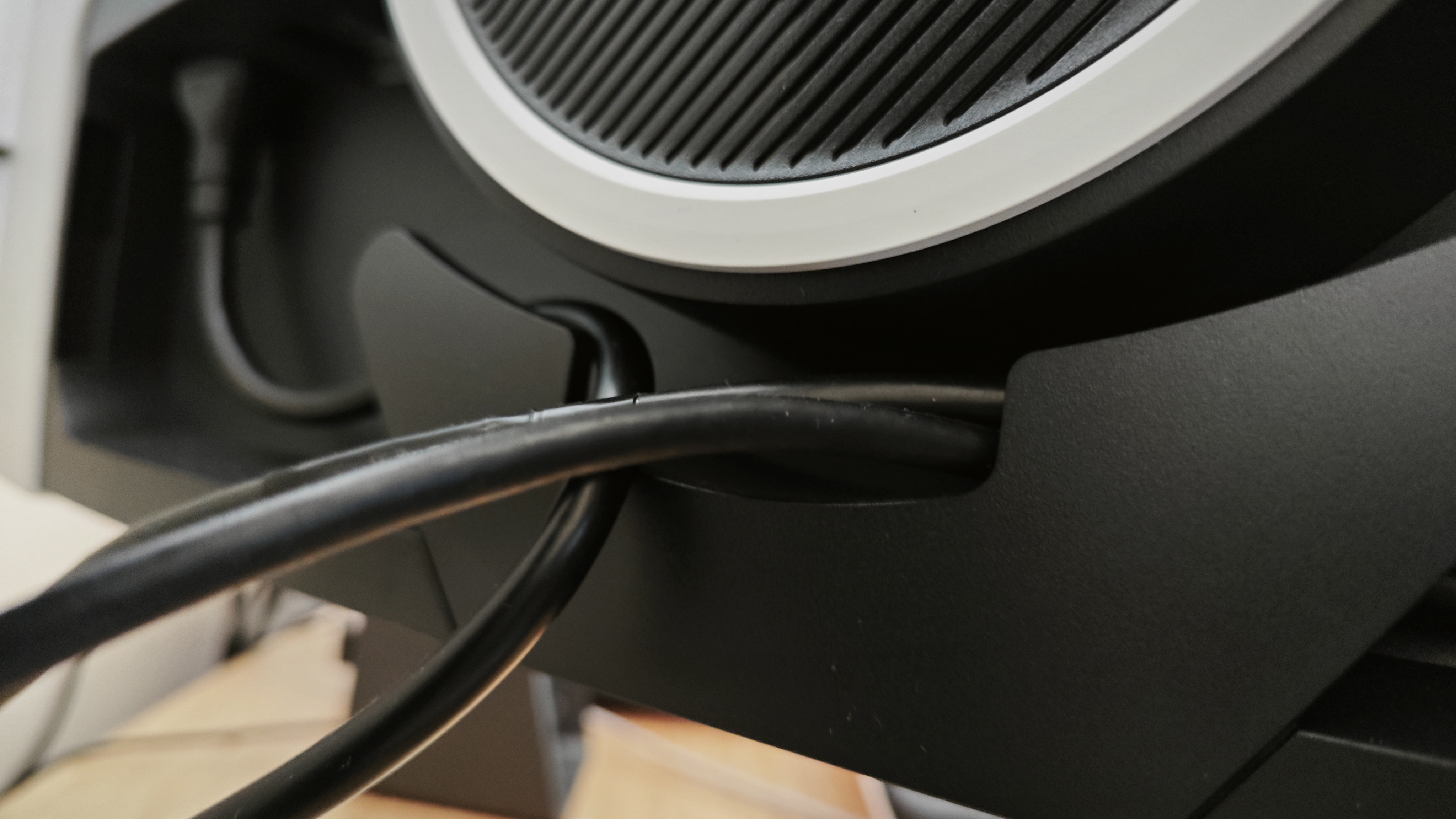
Alienware has a well-established fanbase, and for those, this premium-looking gaming monitor will immediately hit the spot. It's a good-looking, sturdy construction, packed with features for gamers, with colour coverage to suit creative work too, and is bright and comfortable to use. Yes, the physical adjustment range isn't great, it's much heavier than most similarly sized screens, and the cable tidy notch on the back isn't ideally placed, but those are fairly minor niggles for a screen that performs admirably in almost every way I've tested it. It's surely a contender for being one of the best Dell monitors out there right now, as well as the best gaming monitors on offer.







